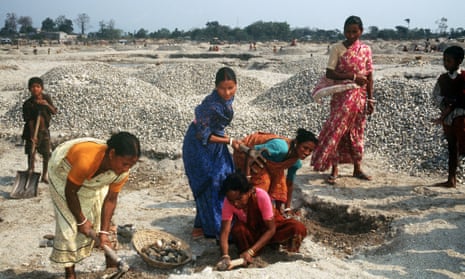The idea of providing low-income people with money to reduce poverty and insecurity was, until recently, regarded with scepticism in development circles. But that is changing rapidly.
The World Bank and others have been converted to conditional cash transfers (CCT). These provide poor people with cash on condition they send their children to school and for medical treatment. It is extended to other conditions, such as doing designated work or undergoing some treatment, including sterilisation, the idea being to induce people to behave in ways deemed good for them.
Numerous tests have concluded that these conditions work. But they should be rejected as morally dubious and paternalistic as poverty targeting always fails. However measured, there are huge exclusion and inclusion errors, and the outcome is often regressive.
Recently, we have conducted three unconditional basic income schemes in India, funded by Unicef. A basic income is a modest cash payment (in this case, a third of subsistence), paid individually, unconditionally, universally and monthly, guaranteed as a right. Altogether, more than 6,000 men, women and children received it, with the children’s money paid to the mother.
In one pilot, everybody in eight villages were provided with a basic income for 18 months, and their experience evaluated by comparing what took place in 12 otherwise similar villages, in a modified randomised control trial.
Making the experiment unique was that it tested for the independent and combined effects of the basic income and a collective body working on behalf of recipients. In half the villages, SEWA (the Self-Employed Women’s Association) operated; in the rest, it was absent.
The only condition was that every adult had to open a bank or co-operative account within three months, into which the basic income was paid. Despite scepticism from our advisory board, a 98% bank account rate was achieved in that period; the rest followed.
The methodology is described in a new book. What the pilots show is that a basic income can be used as development aid and as regional policy in the European Union to deter migration from poor to richer countries. The main conclusion is that a basic income can be transformative. It had four effects, most accentuated by the presence of the collective body.
First, it had strong welfare, or “capability”, effects. There were improvements in child nutrition, child and adult health, schooling attendance and performance, sanitation, economic activity and earned incomes, and the socio-economic status of women, the elderly and the disabled.
Second, it had strong equity effects. It resulted in bigger improvements for scheduled caste and tribal households, and for all vulnerable groups, notably those with disabilities and frailties. This was partly because the basic income was paid to each individual, strengthening their bargaining position in the household and community.
Third, it had growth effects. Contrary to what sceptics predicted (including Sonia Gandhi), the basic incomes resulted in more economic activity and work.
Conventional labour statistics would have picked that up inadequately. There was a big increase in secondary economic activities, as well as a shift from casual wage labour to own-account farming and small-scale business. Growth in village economies is often ignored. It should not be.
Fourth, it had emancipatory effects. These are unappreciated by orthodox development thinkers. The poor’s liberty has no value. But the basic income resulted in some families buying themselves out of debt bondage, others paying down exorbitant debts incurring horrendous interest rates. For many, it provided liquidity with which to respond to shocks and hazards. In effect, the basic income responded to the fact that in such villages money is a scarce commodity, and as such that has driven up its price, locking most in a perpetual cycle of debt and deprivation.
To appreciate the full extent of the emancipation, one should hear the story of the young women who at first wore veils and were reluctant to offend their elders when having their photographs taken to obtain eligibility for the basic income. Within months, they had confidence enough to be sitting and chatting in the centre of the village unveiled. They had their bit of independence.
These four effects – welfare, equity, growth and emancipation – combine to be transformative.
Critics claim a universal scheme is unaffordable. But they would be a substitute for subsidies that in India account for a huge share of national income. They are distortionary, inefficient, regressive and prone to corruption. Switching is feasible and would have substantial positive effects.
Another criticism is that a basic income would be inflationary. But it would be a substitute for more expensive policies. The criticism also neglects the elasticity of supply. Thus, it generated a sharp rise in food production, resulting in better nutrition and productivity and in lower unit prices.
The primary value of a basic income would be its emancipatory effect. If development is about freedom, one should challenge sceptics to show a better way to expand it. Nobody should claim it would be a panacea. Public social services, infrastructural policies and so on are vital. But a basic income should be part of a package of reforms. The development aid community should lend a hand.

Comments (…)
Sign in or create your Guardian account to join the discussion